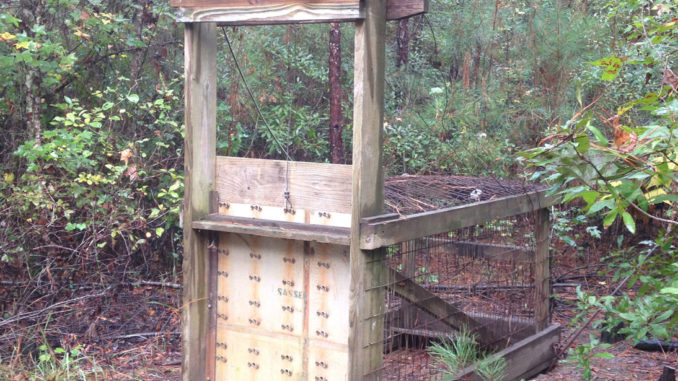
Trapping wild hogs an effective method for filling up the freezer with fresh pork, but trappers can often have trouble coaxing hogs into traps during the summer and fall when food resources are readily available. However, as January arrives and deer season ends, most natural foods are gone and hogs are out on the prowl looking for something to eat; that makes trapping much more effective than any other time of year.
For the best success, large traps should be used to capture the largest number of hogs at a time. When trappers begin capturing animals, the remaining animals will become trap-shy, making it difficult to catch others. The best way to get the most use out of a hog trap is to bait the area for several days to allow the hogs to get used to the trap. Often, a few hogs showing up on one day can turn into over a dozen hogs or more if the trapper allows the trap to remain open. The hogs will quickly become conditioned to eating there as long as the food remains available. Trail cameras should be used to document the use. After the hogs have begun to come to the trap regularly, the trap should be set. After removing the trapped animals, the trap should be reset immediately afterwards to capture any more hogs coming back to the bait.




Be the first to comment